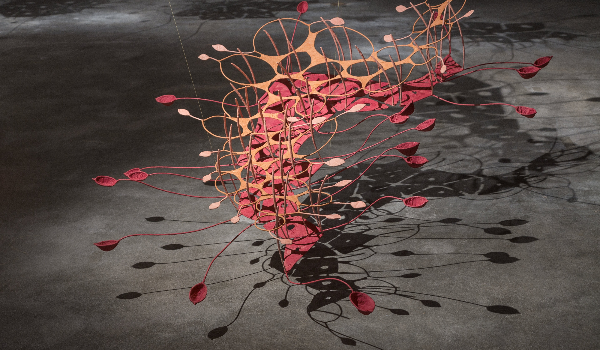
Seven Ponds And A Few Raindrops

Indian artist Ranjani Shettar has been capturing the imaginations of summer visitors to The Met with her exhibition Seven ponds and a few raindrops. The sculptor's installation celebrates the beauty of rural India, whose natural resources are now heavily threatened. By combining natural materials and industrial components, such as beeswax, wood, organic dyes, vegetal pastes, lacquer, steel, and cloth, Shettar's sculptures invoke a complex interplay between the natural and the manmade world. They are non-representation, yet hint at the graceful slope of a leaf, the grid-like structure of city buildings, and other forms.
Shettar was born in 1977 in Bangalore, India and found a passion for sculpture from a young age. After completing her studies in art, her work began to receive attention for her use of traditional crafts and practices when creating contemporary sculptures. Her first solo exhibitions came in 2004 when Shettar's work was displayed at the International Artists' Association in New Delhi and the Talwar Gallery in New York. She has since exhibited in galleries all over the world.

A common feature of Shettar sculpture is the suggestion of movement and forms from nature, despite the non-representational style of her work. In 2009, Shettar created her Bird Song collection, in which muslin and steel were arranged to mimic feathers and flying motion. The delicate and thoughtful beauty of this collection was typical of Shettar's style.
Seven ponds and a few raindrops consists of sixteen individual components, each handcrafted by Shettar herself. She was inspired by techniques used by dollmakers in Karnataka, India, and emulated these skills when working with fabric in the exhibition.
The exhibition runs until 16 September 2018. For more information, visit www.metmuseum.org/exhibitions/listings/2018/ranjani-shettar
Blog post by Jessica Edney
